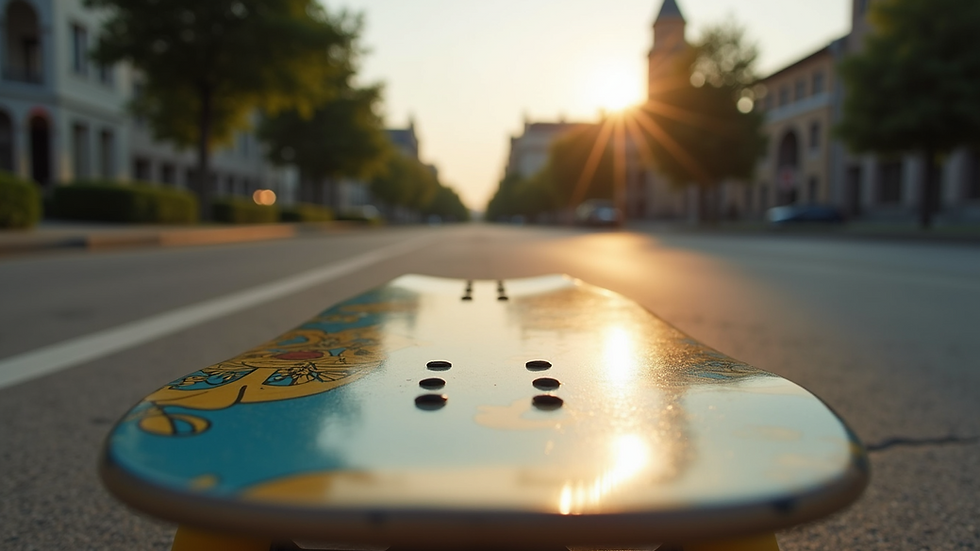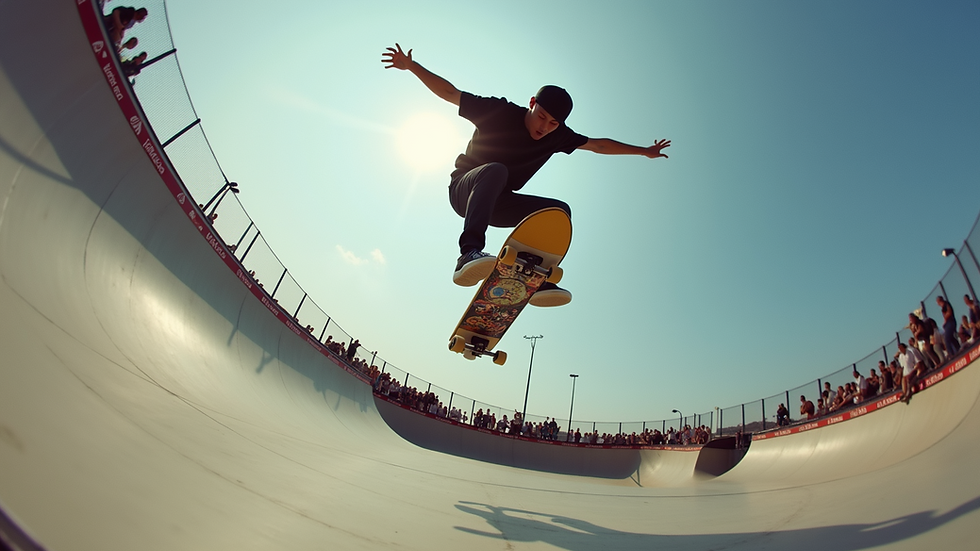Supporting Skateboarding Culture: Marketplace for Community Merchandise
- ERICK AXEL ROSALES PEREZ
- Jul 30
- 5 min read
Skateboarding is more than just a sport; it is a vibrant culture that brings people together. From the thrill of landing a trick to the camaraderie found at local skate parks, skateboarding fosters a sense of belonging. One way to support this culture is through community merchandise. This blog post explores how a marketplace for community merchandise can enhance the skateboarding experience, promote local artists, and strengthen community ties.
The Heart of Skateboarding Culture
Skateboarding culture is rich and diverse. It encompasses not only the act of riding a skateboard but also the art, music, and lifestyle that surround it. Skateboarding has its roots in rebellion and creativity, making it a unique form of self-expression.
The Role of Community Merchandise
Community merchandise plays a vital role in skateboarding culture. It allows skaters to showcase their identity and support local artists. When you wear a shirt designed by a local artist or use a skateboard deck featuring a unique graphic, you are not just making a fashion statement. You are also supporting the community that nurtures this culture.
Benefits of a Marketplace for Community Merchandise
Creating a marketplace for community merchandise offers several benefits:
Support Local Artists: Local artists often struggle to gain visibility. A marketplace can provide them with a platform to showcase their work.
Foster Community Connections: When people buy and wear community merchandise, it creates a sense of belonging. It helps skaters connect with one another.
Promote Unique Designs: Community merchandise often features unique designs that reflect local culture. This can help skaters express their individuality.
Encourage Sustainability: Many local artists focus on sustainable practices. Supporting them can promote eco-friendly choices within the skateboarding community.
Examples of Community Merchandise
There are many types of community merchandise that can be featured in a marketplace. Here are a few examples:
Apparel
T-shirts, hoodies, and hats are popular items. They can feature local designs, logos, or artwork. For instance, a shirt with a graphic of a local skate park can resonate with skaters who frequent that spot.
Skateboard Decks
Custom skateboard decks are a fantastic way to showcase local art. Many artists create limited edition decks that not only serve as functional skateboards but also as pieces of art.
Stickers and Accessories
Stickers are a staple in skate culture. They can be used to personalize skateboards, helmets, or even laptops. Local artists can create unique sticker designs that reflect the community's spirit.
Art Prints
Art prints featuring skateboarding themes can be a great addition to any skater's home. These prints can celebrate local skate spots or iconic moments in skateboarding history.
How to Create a Successful Marketplace
Creating a successful marketplace for community merchandise requires careful planning and execution. Here are some steps to consider:
Identify Your Audience
Understanding your target audience is crucial. Are you catering to young skaters, seasoned pros, or families? Knowing your audience will help you curate the right products.
Collaborate with Local Artists
Reach out to local artists and designers. Collaborating with them can lead to unique merchandise that resonates with the community. Consider hosting design contests to engage the community and discover new talent.
Promote Your Marketplace
Use social media to promote your marketplace. Share stories about the artists and their work. Highlight the importance of supporting local talent. Engaging content can attract more customers.
Host Events
Consider hosting events at local skate parks or community centers. These events can include art shows, skate competitions, or pop-up shops. They provide an opportunity for the community to come together and support local artists.
The Impact of Community Merchandise on Skateboarding Culture
Community merchandise can have a profound impact on skateboarding culture. It can help preserve local history and promote a sense of pride among skaters. When skaters wear merchandise that represents their community, they are making a statement about who they are and where they come from.
Building a Sense of Belonging
Wearing community merchandise fosters a sense of belonging. It creates a visual connection among skaters. When someone sees another person wearing a shirt from a local artist, it can spark conversations and friendships.
Supporting Local Economies
A marketplace for community merchandise can also support local economies. When people buy from local artists, they are investing in their community. This can lead to more opportunities for artists and a stronger local economy.
Encouraging Creativity
Community merchandise encourages creativity within the skateboarding culture. Artists are inspired to create unique designs that reflect their experiences and surroundings. This creativity can lead to innovative products that resonate with skaters.
Challenges to Consider
While creating a marketplace for community merchandise is exciting, there are challenges to consider:
Competition
There are many online marketplaces and big brands that dominate the market. Finding a niche and differentiating your products is essential.
Quality Control
Ensuring the quality of merchandise is crucial. Poor quality products can damage the reputation of the marketplace and discourage customers.
Marketing
Effective marketing is necessary to attract customers. It requires time, effort, and creativity to stand out in a crowded market.
Success Stories
Several communities have successfully created marketplaces for community merchandise. Here are a few examples:
The Skate Shop Collective
This collective features local artists and designers. They offer a range of products, from apparel to skateboard decks. Their focus on community engagement has helped them build a loyal customer base.
Local Skate Park Merchandise
Many skate parks have started selling merchandise that features their logo and local designs. This not only supports the park but also creates a sense of pride among skaters who frequent it.
Art Shows and Pop-Up Shops
Some communities host art shows and pop-up shops that feature local artists. These events attract skaters and art lovers alike, creating a vibrant atmosphere that celebrates creativity.
The Future of Community Merchandise in Skateboarding
The future of community merchandise in skateboarding looks promising. As more people recognize the importance of supporting local artists, the demand for unique, community-driven products will likely grow.
Embracing Technology
Technology can play a significant role in the future of community merchandise. Online platforms can help artists reach a wider audience. Social media can be used to share stories and promote products.
Sustainability Focus
As awareness of environmental issues increases, many consumers are looking for sustainable options. Community merchandise that emphasizes eco-friendly practices will likely attract more customers.
Expanding the Marketplace
The marketplace can expand to include more products and services. Workshops, classes, and events can be integrated into the marketplace, creating a hub for the skateboarding community.
Final Thoughts
Supporting skateboarding culture through a marketplace for community merchandise is a powerful way to strengthen community ties and promote local artists. By embracing creativity and fostering connections, we can ensure that skateboarding culture continues to thrive.
Whether you are a skater, an artist, or simply someone who appreciates the culture, consider how you can contribute. Together, we can build a vibrant community that celebrates the spirit of skateboarding.



Comments